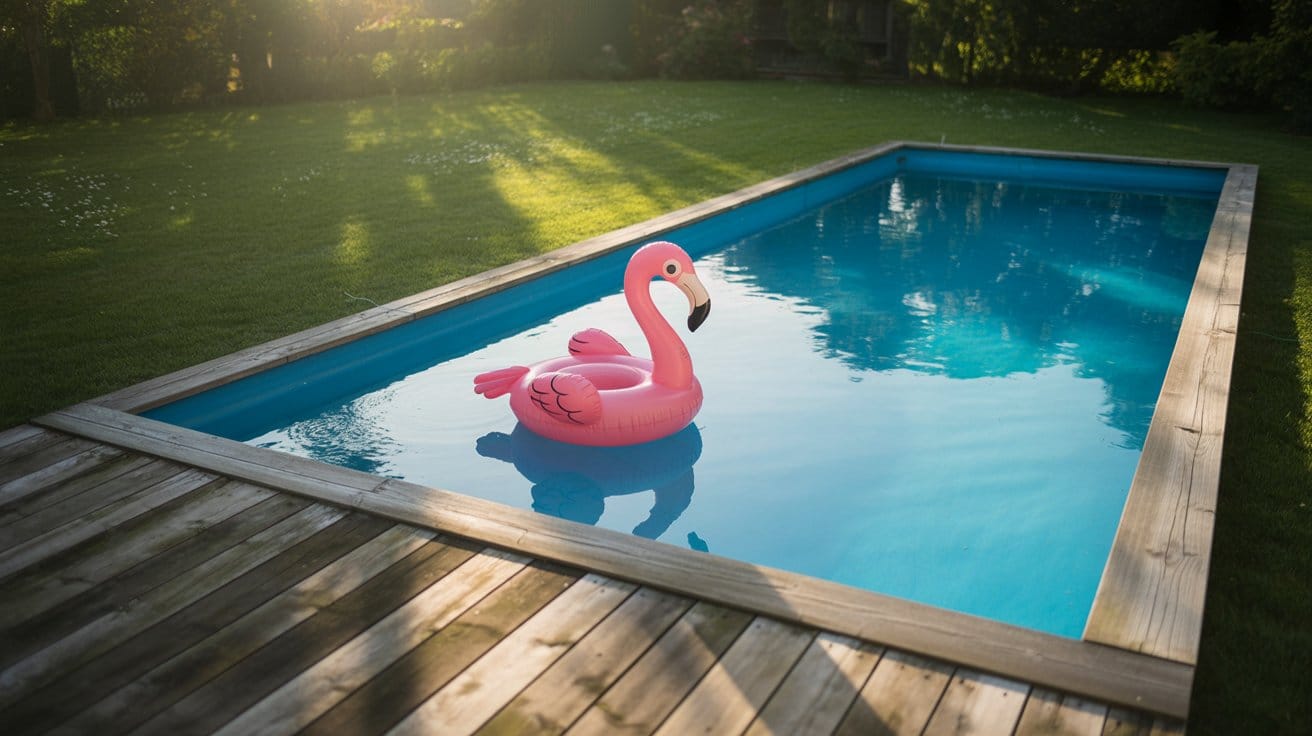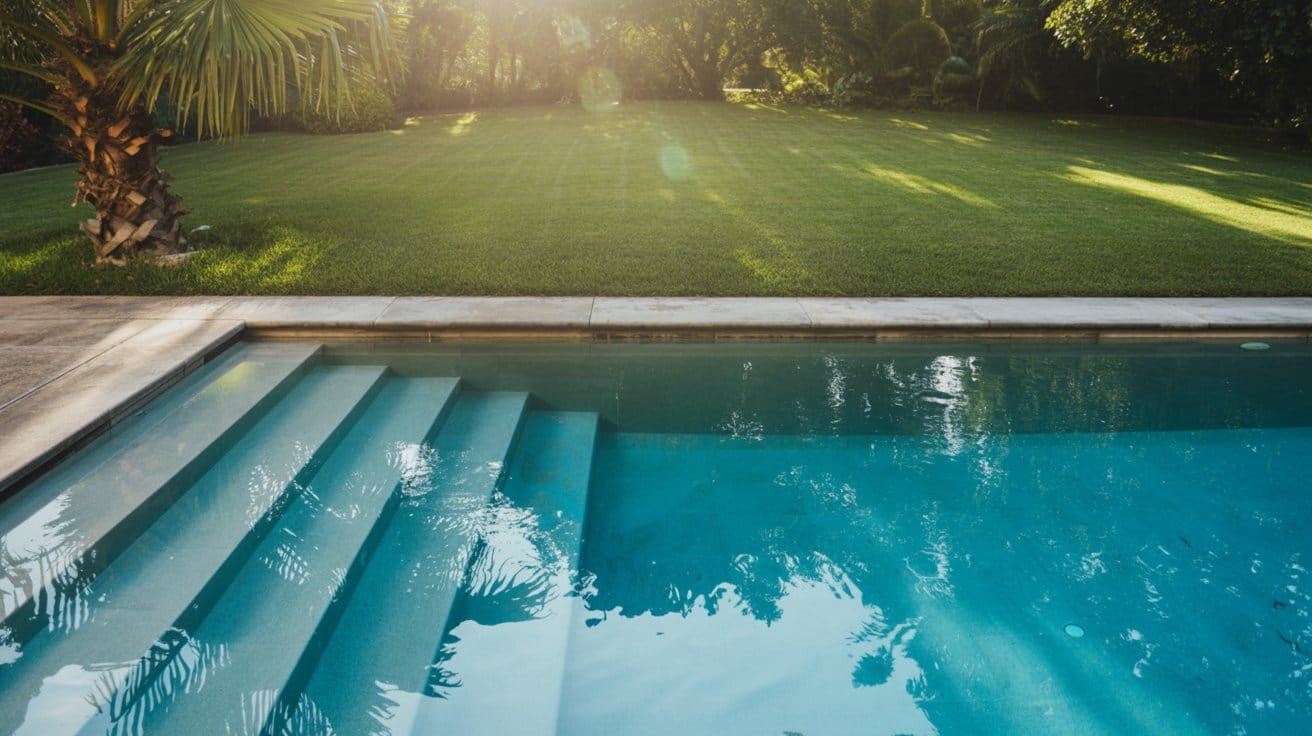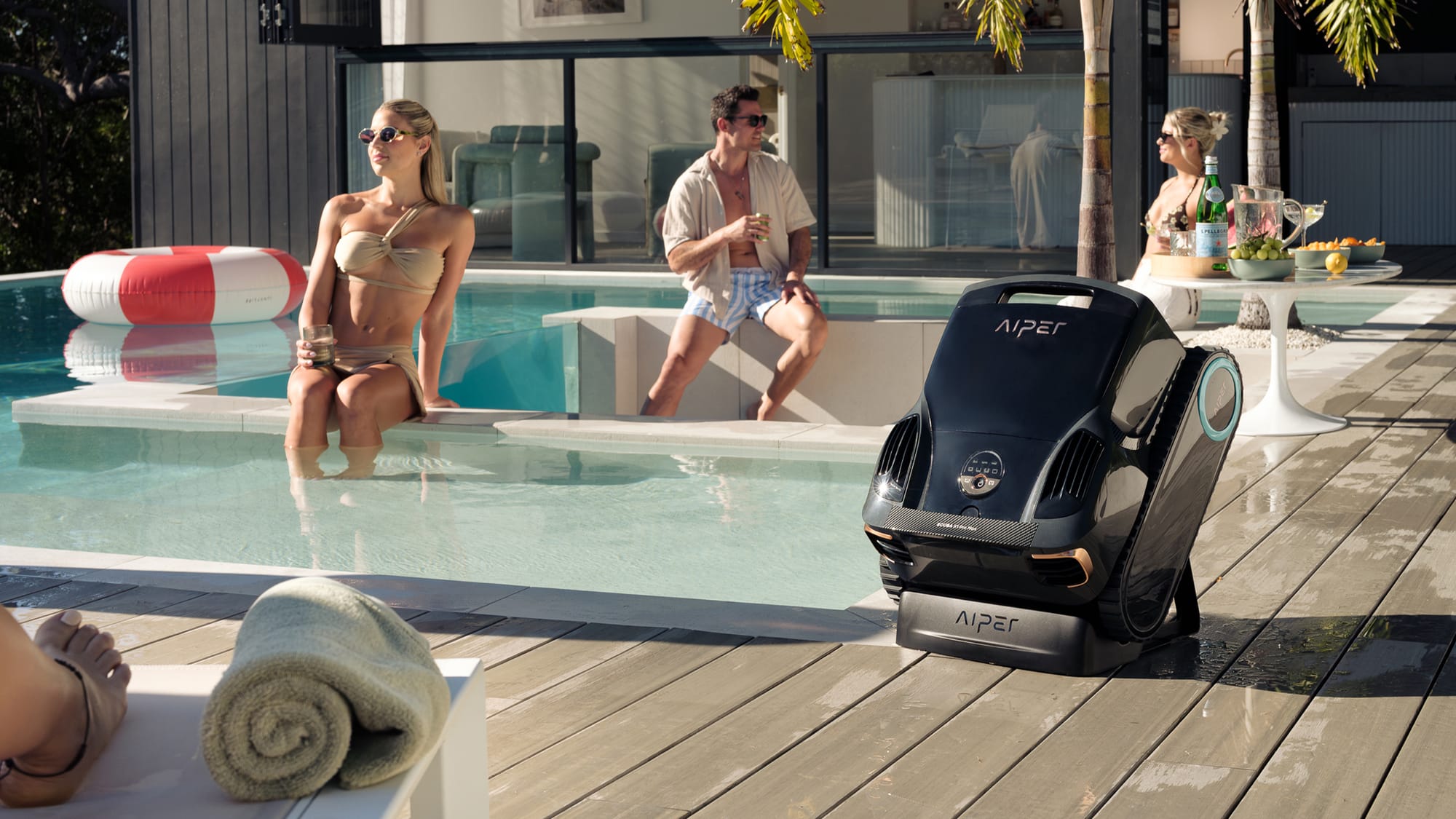How to Maintain Grass Around a Pool: A Pool Owner's Step-by-Step Guide

Imagine stepping out of your pool after a refreshing swim, only to feel your skin itching, your eyes stinging, and the water feeling oddly sticky. If this sounds familiar, your pool's chemical balance might be off, and the grass around your pool could be the culprit. Grass clippings, fertilizer runoff, and other lawn debris can wreak havoc on your pool water, causing algae blooms, depleting oxygen, and turning your backyard oasis into a maintenance nightmare. Balancing beauty and practicality when landscaping around your pool is no easy task. Lush green grass creates that picture-perfect backyard vibe, but you may find yourself asking, "Does pool water kill grass?" or struggling to keep grass from creeping into areas where it’s not wanted. Fortunately, with the right grass varieties—like slow-growing, sun-and-shade-tolerant Zoysia—and smart maintenance strategies, you can maintain a stunning poolside lawn without compromising your pool’s water quality.
In this guide, we'll walk you through practical solutions that protect both your lawn and your swimming pool. From creating protective barriers (a good fence is a great place to start!) to choosing the right grass species, we've got you covered with everything you need to maintain that perfect poolside landscape.
Understand the Risks of Grass Near Pools
Managing grass near your swimming pool creates several challenges that every pool owner should understand. Grass clippings from routine lawn maintenance pose a significant risk to pool water quality. After mowing, these clippings can be blown into your pool, where they sink to the bottom and begin to decompose, introducing unwanted organic material. Furthermore, if your lawn was recently fertilized, these innocent-looking grass clippings bring phosphates and other chemicals directly into your pool water.
The chemical interaction between lawn care products and pool water creates a concerning chain reaction. Phosphates fuel algae growth, which rapidly consumes your pool's chlorine. Consequently, what starts as a few grass clippings can transform your crystal-clear pool into a green, cloudy mixture of algae, lawn clippings, and chemicals within days.

Fertilizer presents another major concern for pool owners. Most lawn fertilizers contain nitrogen and phosphorus, substances that:
- Deplete oxygen levels in your pool water
- Cause algae blooms and cloudy water conditions
- Throw your pool's chemical balance into disarray
Additionally, fertilizer runoff from sprinklers or rain can easily make its way into your pool. This happens especially after heavy application or when fertilizer is spread too close to the pool area.
Natural grass around pools also creates safety hazards, becoming dangerously slippery when wet. This increases the risk of falls and injuries around your pool area.
The relationship works both ways—pool water can affect your grass as well. High concentrations of chlorine can burn grass, causing it to turn yellow or brown, especially during hot, sunny weather. Salt from saltwater pools may dehydrate the grass roots and create a saline environment that makes it difficult for grass to absorb nutrients.
Understanding these interactions between your pool and the surrounding lawn is essential for effective landscaping around pool areas. With proper planning and maintenance, you can minimize these risks while enjoying both a beautiful lawn and a clean, safe swimming pool.
Create a Safe Buffer Between Lawn and Pool
Creating a buffer zone between your lawn and swimming pool is the first step to maintaining a beautiful yard without compromising pool water quality. This strategic separation prevents grass clippings, fertilizer, and soil from entering your pool while providing additional benefits.
One effective buffer solution is installing hardscaping elements around your pool perimeter. Options include:
- Gazebos or pergolas that extend your outdoor living space
- Fire pits for evening entertainment
- Pool decks (particularly popular with above-ground pools)
- Walkways made from pavers, stone, brick, or concrete
These hardscape elements not only look attractive but serve practical purposes—keeping feet clean and reducing the amount of debris that makes its way into your water.
For a simpler approach, create a border using landscaping rocks. Many pool owners find success with medium to large stones rather than pea gravel, which can easily end up inside your pool. When installing rock borders, remember to leave small gaps between stones for proper drainage—a lesson learned from experience, as water that stands against pool legs can accelerate rusting.
Mulch offers another low-maintenance alternative to grass near pools. Besides requiring only periodic weeding, mulched areas create perfect spaces for adding chlorine-tolerant plants that enhance your poolscape. Consider evergreen shrubs like arborvitae, cypress, or yew, which provide privacy with minimal leaf litter. Ornamental grasses such as liriope or small trees like various palm varieties work wonderfully in these buffer zones.
Regardless of your chosen buffer material, keep all plants at least a few meters away from splash zones. Avoid plants that shed excessive petals or leaves, as well as thorny varieties that could cause injuries around your pool area.
The width of your buffer zone matters too. A border of at least 2-3 feet creates sufficient space for maintenance activities like weed trimming without risking damage to your pool liner or introducing grass clippings into the water.
Maintain Grass Without Harming the Pool
Even with a proper buffer in place, regular lawn care near your swimming pool requires specific techniques to prevent contamination. Practical mowing methods can help keep the pool water clean. When cutting grass close to your pool, always position your mower so the discharge chute points away from the water. For the best results, consider using a mulching mower, which helps contain clippings instead of blowing them into the air.
String trimmers present unique challenges when maintaining grass around pool edges. To minimize debris entering the water, adjust your trimming technique to control where the grass clippings go. Specifically, trim with the rotation spinning away from the pool area and switch the trimmer when necessary to keep this directional control. Some professionals use dual-directional string trimmers that allow precise control over where the clippings land.
For thorough pool protection during lawn care, try these effective solutions:
- Keep grassy areas at least 2-3 yards from your pool whenever possible.
- Speak with your landscaper about directing clippings away from the water.
- Run your pool skimmer for several hours after mowing is finished.
- Use a bagging mower to collect grass clippings.
- Replace grass near your pool with low-maintenance ground covers.
- Install wide walkways around the entire pool perimeter.
- Plant hedges or flower gardens as protective barriers.
Even with all precautions in place, some debris may still find its way into the pool. For hassle-free daily maintenance, consider using a robotic pool cleaner like the Aiper Scuba X1 Pro Max. It efficiently removes grass clippings, leaves, and other debris, keeping your pool water pristine with minimal effort.

To further reduce pool contamination from lawn care, consider smart irrigation solutions like the Aiper IrriSense Smart Irrigation Sprinkler. This device uses app-based mapping to water only designated lawn areas, avoiding pool decks and walkways to minimize runoff and debris near the pool. Its weather-adaptive technology also prevents overwatering, which reduces muddy patches that could get tracked into the pool. This makes it a useful tool for maintaining a healthy lawn without compromising pool cleanliness.

For above-ground pools, use the bag on your mower to collect grass cuttings and stop them from being tracked into the pool on swimmers' feet. Instead of using a weed trimmer directly against pool edges, which might damage pool materials, consider using hand tools like shears for more precision.
Timing matters too. Coordinating lawn care with pool cleaning schedules improves efficiency. Ideally, plan lawn maintenance the day before the pool cleaning service to minimize the impact of any stray clippings.
However, it's important to have realistic expectations. As one professional states, "If the client expects absolutely no grass in the pool, you'll spend excessive time on prevention." A small amount of clippings usually won’t harm modern pool filtration systems.
Conclusion
Maintaining grass around your pool area certainly requires careful planning and consistent effort. Throughout this guide, we've seen how the relationship between your lawn and swimming pool creates unique challenges that demand thoughtful solutions.
Proper grass maintenance near pools starts with understanding the risks involved. Grass clippings, fertilizer runoff, and safety hazards all threaten your pool's water quality and your family's safety. Therefore, creating an effective buffer zone becomes essential for protecting both your lawn and pool.
Buffer solutions like hardscaping, rock borders, or mulched areas not only look attractive but also serve practical purposes. These barriers significantly reduce debris entering your water while creating opportunities for enhancing your poolscape with appropriate plants.
Additionally, adopting smart lawn maintenance techniques makes a substantial difference. Mowing with discharge chutes pointed away from water, using mulching mowers, and timing lawn care appropriately all contribute to keeping your pool pristine.
Remember, the perfect balance between a beautiful lawn and a clean pool requires some compromise. Most importantly, realistic expectations help you enjoy both aspects of your backyard oasis without frustration. Though some minimal debris might occasionally find its way into your pool, modern filtration systems can handle small amounts without problems.
To further simplify daily upkeep, the reliable tools from Aiper can help automate lawn watering and pool cleaning, allowing you to enjoy a low-maintenance, high-reward outdoor space.
By following these guidelines, you'll create a harmonious outdoor space where your grass and pool coexist beautifully. The extra effort invested in proper planning and maintenance will undoubtedly pay off with fewer cleaning headaches and more time to enjoy your backyard paradise.
